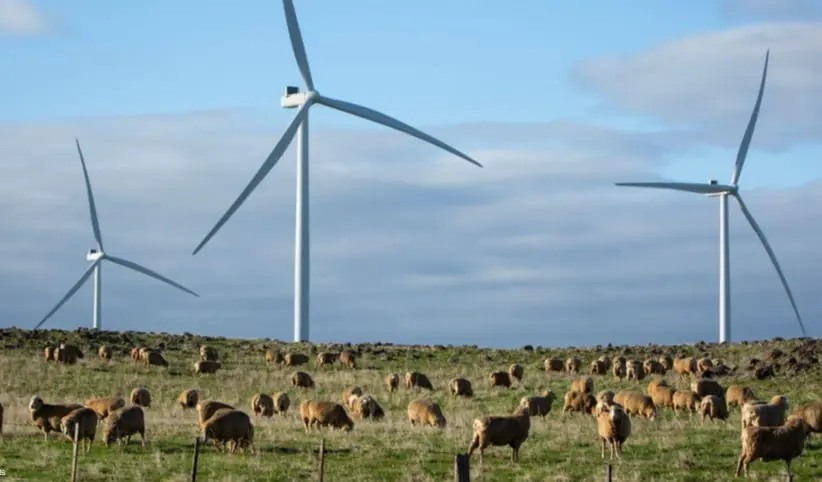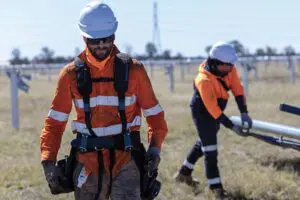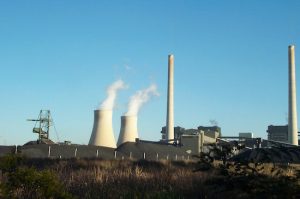The Australian Energy Market Operator says the main wind farm affected by the dramatic events in Victoria’s electricity grid last week responded “as designed”, as conservative media continued their extraordinary attack against renewables.
AEMO issued a preliminary report late on Friday into the incident, which was sparked by the collapse of six transmission towers last Tuesday that led to the trip of the state’s biggest coal generator, Loy Yang A, and the loss of 1,000 MW of load.
The transmission collapse led to forced outages (load shedding) that affected some 90,000 customers for up to one hour later that afternoon, and another 530,000 customers lost power because of damage to local networks caused by fallen power poles and trees over lines.
The conservative media has been relentless in its attempts to demonise renewables as the cause of the outages, as have many in the federal Coalition, while most energy analysts say the issue is really about the resilience of transmission infrastructure in the face of storms made more intense by climate change.
There are, however, many questions for AEMO and power engineers about the events on Tuesday, February 13, in particular the question as to why Loy Yang A tripped, when other power stations, including the neighbouring Loy Yang B, did not.
AEMO’s interim report details the multiple events of the day, which started with the loss of 500 MW of output from the Stockyard Hill wind farm, the state’s biggest wind farm, at 11.35am (grid time, or AEST), about 1.5 hours before the storm, reportedly due to a local grass fire.
At 1.08pm (grid time), the storm below down the transmission towers west of Melbourne, triggering the loss of the 500kV transmission line, and causing 2.69 GW of generation to be “shaken” from the grid – mostly Loy Yang A, and the Dundonnell and Yaloak wind farms.
The three components that make up the Dundonnell wind farm were producing around 273 MW at the time of the transmission loss, but according to AEMO “tripped as designed due to operation of the South West 500 kV special control scheme.”
No such caveats were placed on Loy Yang A, or the small Yaloak wind project, which was producing 22 MW at the time. Loy Yang A owner AGL says it is still investigating why the four coal units tripped, and analysts have wondered what happened to its so-called “ride through” systems.
“In total, approximately 2,690 megawatts (MW) of generation was lost, and 1,000 MW of load was shaken off in Victoria following the disturbance,” AEMO’s initial report says.
Another important observation from the AEMO report is that the load shedding, or forced outages, was the result of network constraints, and not the lack of renewables, or any other generation for that matter. Renewables, in fact, had been recording record output in the lead up to the events.
“There was enough generation in the Victoria region to meet demand,” AEMO writes.
“However, due to constraints on the network, this generation was not able to supply the load. “
So, at 2.20pm (grid time), AEMO declared an “LOR3” – lack of reserve – and gave orders to network company Ausnet to shed 300 MW of load in certain metropolitan areas to maintain the system in a secure operating state.
This was partially reversed half an hour later, and within 45 minutes, all of that load had been restored. It took several days, however, for some of the half million customers affected by local network damage to get power power, and around 10,000 had still not been re-connected on Monday morning.
It may take several weeks, or months, to fully analyse what occurred and why, and to assess the reason for the tripping of Loy Yang A, and to analyse the response of other generators, the state’s growing fleet of big batteries, and rooftop solar.

In the meantime, nonsense will likely fill the vacuum. The Murdoch media’s Sky News has been leading the charge, with commentator Chris Kenny declaring it was “incontestable” that the transition to renewables was the cause of the events and the outages, including the half million affected by local network damage.
Fellow Sky commentator Andrew Bolt blamed “mad green schemes” for the outages, and had a particular go at rooftop solar, which – to his shock and outrage – stopped generating when the sun went down (with no impact on the system, it should be pointed out.
“Victoria just doesn’t have enough peaking or baseload power such as gas to keep the system stable or restart it quickly,” Bolt wrote in an article widely published in Murdoch media publication. Which, as the AEMO report makes clear, is patently untrue.










